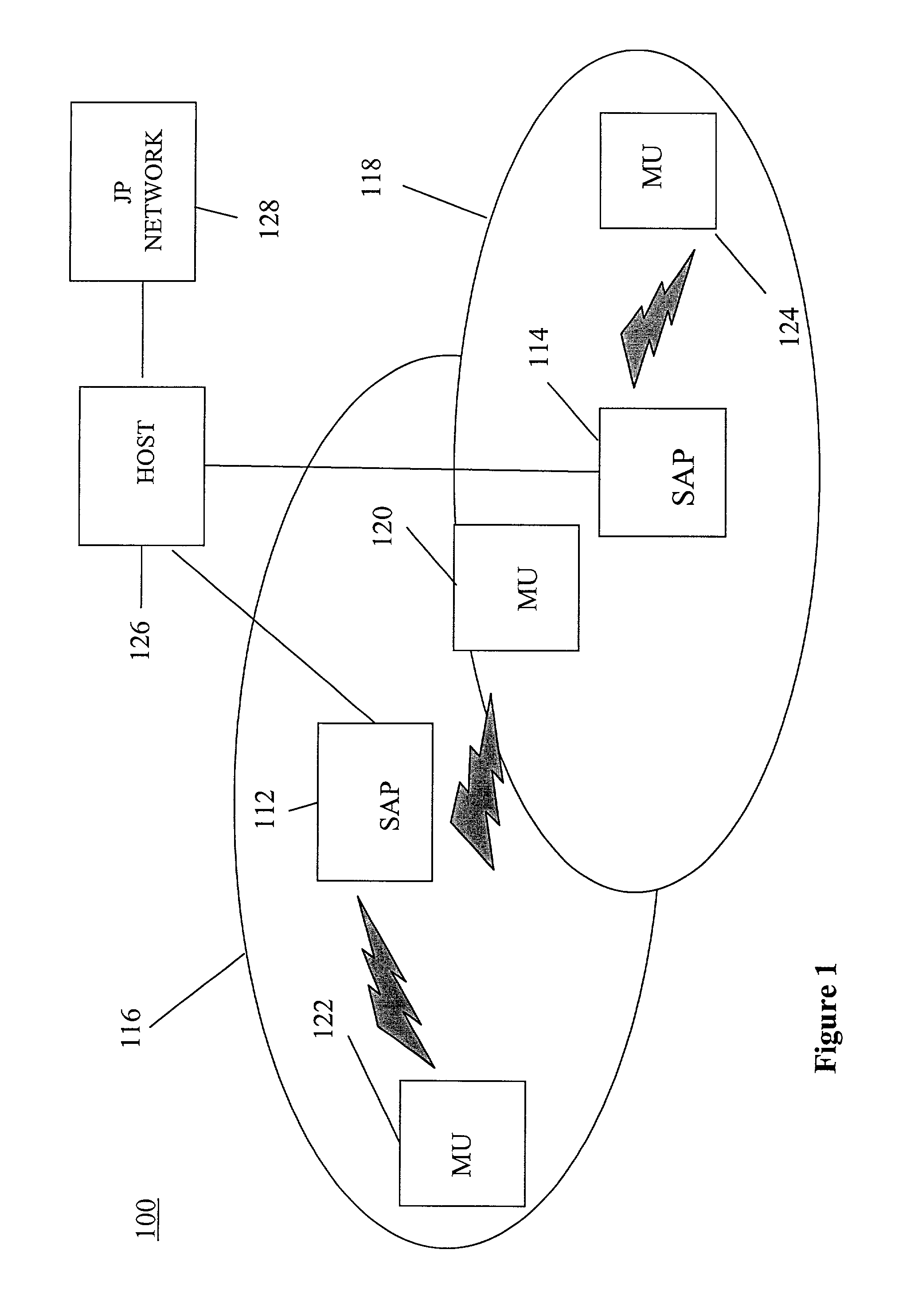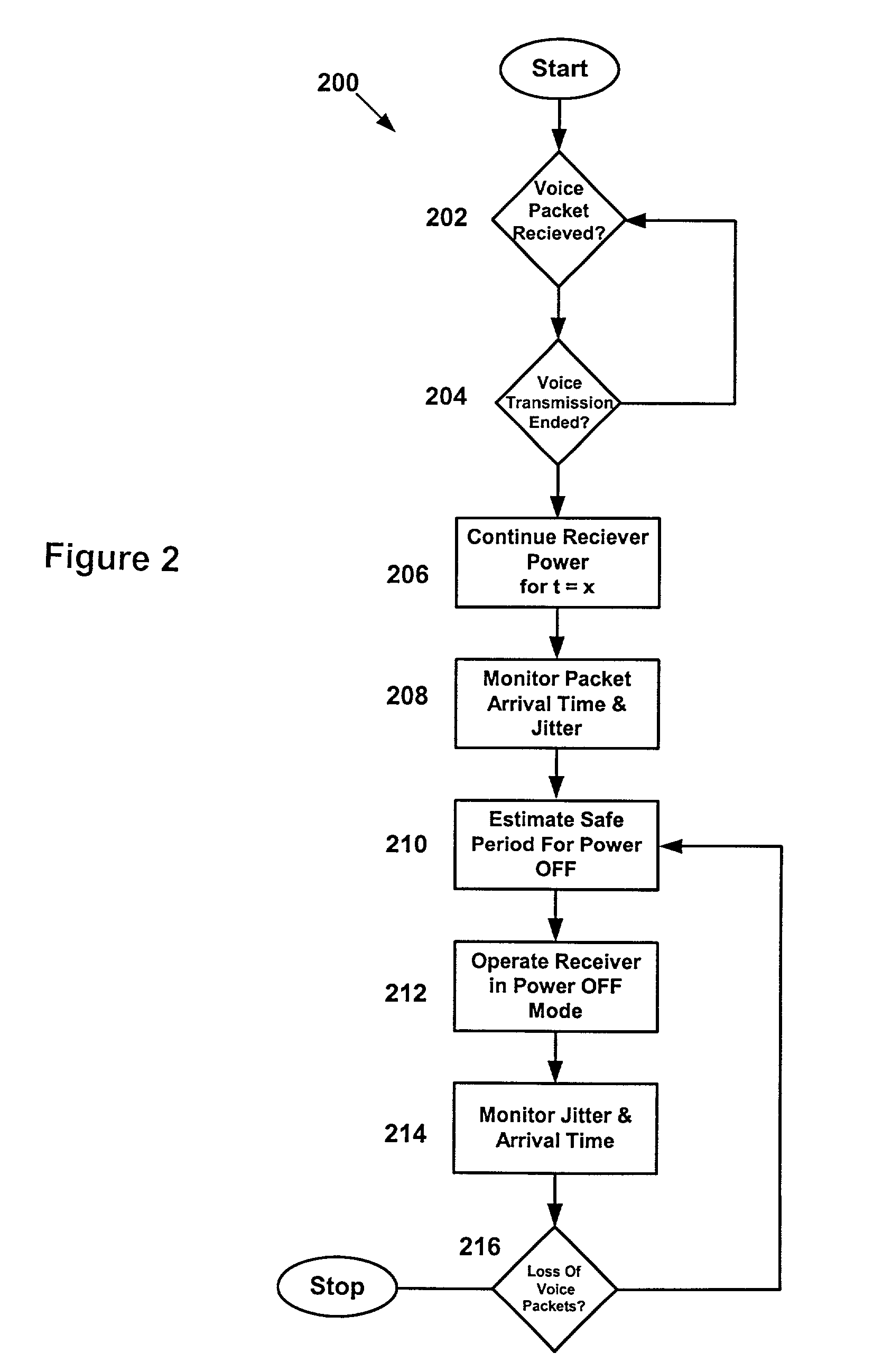Power saving function for wireless LANS: methods, system and program products
a wireless lan and power saving technology, applied in the field of wireless communication networks, can solve the problems of considerable power consumption during the receive mode, the phone cannot operate in psm mode, etc., and achieve the effect of improving the power saving function and reducing the power off tim
- Summary
- Abstract
- Description
- Claims
- Application Information
AI Technical Summary
Benefits of technology
Problems solved by technology
Method used
Image
Examples
Embodiment Construction
[0016]In FIG. 1, a wireless LAN 100 includes stationery access points (SAPs) 112, 114 within geographical areas 116 and 118 sending messages to and receiving messages from stations or mobile units (MUs) 120, 122 and 124. The 802.11 standard defines access points as addressable stations, providing an interface to the distribution system for stations within a geographic area. The access points are connected to a host 126, typically a PBX or the regular telephone system which is in turn linked to an IP network 128 enabling stations to communicate with users served by the IP network. A description of a mobile network interacting with an IP network is described in the text Wireless and Mobile Network Architectures by Y. Lin et al., published by John Wiley and Sons, NY, N.Y. 2001 (IBN0471-39492-0), Chapter 16 which is fully incorporated herein by reference.
[0017]The IEEE 802.11 defines the standards for wireless local area networks, the details of which are described in the text IEEE 802....
PUM
 Login to View More
Login to View More Abstract
Description
Claims
Application Information
 Login to View More
Login to View More - R&D
- Intellectual Property
- Life Sciences
- Materials
- Tech Scout
- Unparalleled Data Quality
- Higher Quality Content
- 60% Fewer Hallucinations
Browse by: Latest US Patents, China's latest patents, Technical Efficacy Thesaurus, Application Domain, Technology Topic, Popular Technical Reports.
© 2025 PatSnap. All rights reserved.Legal|Privacy policy|Modern Slavery Act Transparency Statement|Sitemap|About US| Contact US: help@patsnap.com



